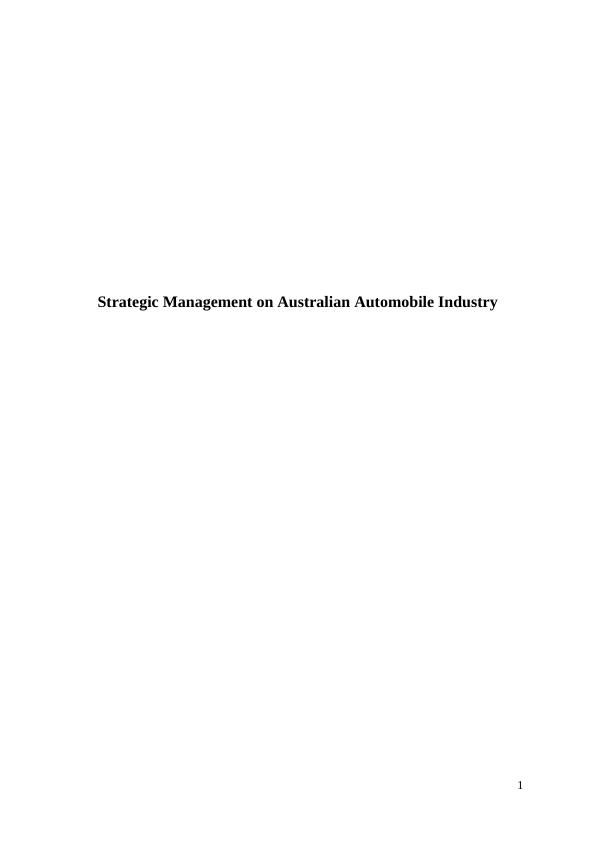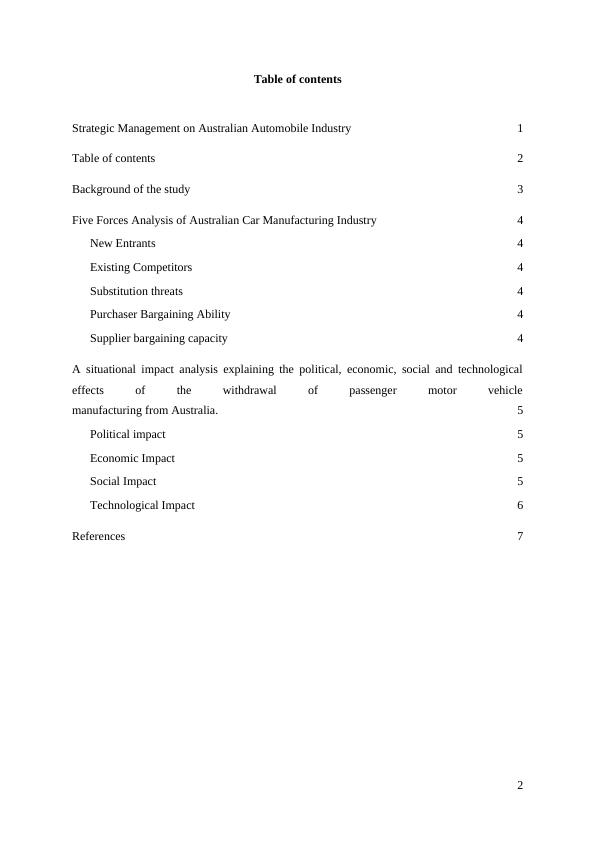Strategic Management on Australian Automobile Industry
Undertake a strategic analysis involving background study, Five Forces model and competitor analysis, and situational impact analysis on the withdrawal of passenger motor vehicle manufacturing from Australia.
Added on 2023-05-28
About This Document
This article discusses the history of the Australian automobile industry, Porter's Five Forces analysis of the industry, and the situational impact analysis of the withdrawal of passenger motor vehicle manufacturing from Australia. It also explores the political, economic, social, and technological effects of the withdrawal on the country.
Strategic Management on Australian Automobile Industry
Undertake a strategic analysis involving background study, Five Forces model and competitor analysis, and situational impact analysis on the withdrawal of passenger motor vehicle manufacturing from Australia.
Added on 2023-05-28
End of preview
Want to access all the pages? Upload your documents or become a member.



